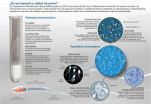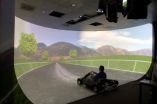(Press-News.org) A new ground-breaking study about to be published in the Adis journal CNS Drugs provides clinical evidence that, for the first time, chronic neurological dysfunction from stroke or traumatic brain injury can rapidly improve following a single dose of a drug that targets brain inflammation, even years after the stroke or traumatic event.
The observational study¹ of 629 patients, conducted over the course of nearly two years, documents a diverse range of positive effects, including statistically significant rapid clinical improvement in motor impairment, spasticity, cognition, etc. in the stroke group, with a similar pattern of improvement seen in the traumatic brain injury (TBI) group. The study involved 617 patients treated an average of 42 months after stroke and 12 patients treated an average of 115 months after TBI, long after further spontaneous meaningful recovery would be expected.
The study was conducted at the Institute of Neurological Recovery (INR) in the USA.
The drug utilized was etanercept, a therapeutic that selectively binds and neutralizes an inflammatory immune molecule that may remain elevated for years following stroke. Etanercept was administered utilizing a novel delivery method, invented by Edward Tobinick M.D., lead author of the study.
"These results represent a sea change in the therapeutic possibilities for stroke and TBI patients," said Steven Ralph PhD, Associate Professor at Griffith University School of Medical Science in Australia. "Rarely do we see such a radical breakthrough in medical treatment as this for stroke. A previous example was the advance with thrombolytic therapy using drugs such as tissue plasminogen activator (t-PA) for the treatment of acute stroke with their significant impact when applied at the early stages. However, no similar treatment has existed for chronic stroke until now."
Professor Ralph recently led a team of physicians to the INR for training in the new etanercept delivery method, prior to their initiation of randomized trials in Australia. "Our team observed, first hand, rapid clinical improvement in stroke patients following this brief office treatment," said Professor Ralph.
In an accompanying editorial², Professor Ian Clark, a world expert on tumor necrosis factor (TNF) and brain dysfunction, discusses the science underlying the novel treatment method and clinical results. The high prevalence of chronic post-stroke and post-TBI neurological disability, with millions of individuals affected worldwide, highlights the study's significance.
INFORMATION:
References
1. Tobinick E, Kim N, Reyzin G, et al. Selective TNF Inhibition for Chronic Stroke and Traumatic Brain Injury – An Observational Study Involving 629 Consecutive Patients Treated with Perispinal Etanercept. CNS Drugs. 2012;16(12). DOI 10.1007/s40263-012-0013-2
2. Clark, I. New Hope for Survivors of Stroke and Traumatic Brain Injury. CNS Drugs. 2012;16(12). DOI 10.1007/s40263-012-0014-1
The fulltext-article is available to journalists on request. Also Dr. Tobinick and Dr. Ralph are available for interviews.
END
A team of physicists from Europe and South Africa showed that electrons moving randomly in graphene can mimic the dynamics of particles such as cosmic rays, despite travelling at a fraction of their speed, in a paper about to be published in EPJ B.
Andrey Pototsky and colleagues made use of their knowledge of graphene, which is made of a carbon layer, one atom thick, and packed in a honeycomb lattice pattern. In such material the interaction of electrons with atoms changes the effective mass of the electrons. As a result, the energy of electrons in graphene becomes similar ...
WASHINGTON, Oct. 31—As a human fetus develops, its heart has to keep pace with the new body's ever-growing demands. Much of this is controlled by following genetic blueprints, but the embryonic heart also matures in response to the intense stresses of pumping blood. For the first time, researchers have been able to visualize in 3-D the stresses induced by flowing blood in an embryonic heart. The technique, which promises to provide new insight into how and why heart defects develop, is described in a paper published today in the Optical Society's (OSA) open-access journal ...
Scientists from the University of Sheffield have unlocked one of the secrets to DNA repair –helping doctors identify DNA base damage and a patient's susceptibility to certain types of cancer.
Groundbreaking research led by Dr David Williams from the University of Sheffield's Department of Chemistry and an international collaboration of expert researchers has discovered how some proteins recognise damaged bases within DNA which, if untreated, could lead to cancer.
Dr Williams said: "Proteins carry out all the day-to-day processes needed for survival. If the DNA bases ...
The mere mention of the word "herpes" usually conjures negative images and stereotypes, but most people have been infected with some form of the virus. For most, a sore appears, heals and is forgotten, although the virus remains latent just waiting for the right circumstances to come back. Now, the mystery behind what triggers the virus to become active again is closer to being solved thanks to new research published in the Journal of Leukocyte Biology's November 2012 issue. In the report, scientists show how the immune system may lose its control over the virus when facing ...
A new study conducted by researchers at the University of Cordoba links moderate physical activity in males with better hormone levels and sperm characteristics that favour reproduction compared to sedentary men.
Semen quality at large has dropped in the last 50 years. Amongst other factors, this is due to exposure to external agents and alcohol and tobacco consumption. This decline in sperm properties has caused an increase in reproductive problems.
Therefore, experts have studied the possible relationship between sperm quality and lifestyle habits in males. Published ...
Boston, Mass.—Researchers at Boston Children's Hospital have found that microscopic particles containing proteins and nucleic acids called exosomes could potentially protect the fragile lungs of premature babies from serious lung diseases and chronic lung injury caused by inflammation.
The findings explain earlier research suggesting that while transplanting a kind of stem cell called mesenchymal stem cells (MSCs) could help reduce lung injury and prevent inflammation in a mouse model, the fluid in which the cells were grown was more effective than the cells themselves.
The ...
ANN ARBOR—It looks like Mother Nature was wasting her time with a multimillion-year process to produce crude oil. Michigan Engineering researchers can "pressure-cook" algae for as little as a minute and transform an unprecedented 65 percent of the green slime into biocrude.
"We're trying to mimic the process in nature that forms crude oil with marine organisms," said Phil Savage, an Arthur F. Thurnau professor and a professor of chemical engineering at the University of Michigan.
The findings will be presented Nov. 1 at the 2012 American Institute of Chemical Engineers ...
Scientists have identified a molecular 'flag' in women with breast cancer who do not respond or have become resistant to the hormone drug tamoxifen.
Tamoxifen – used alongside traditional chemotherapy and radiotherapy – blocks the female hormone oestrogen that, in certain breast cancers, is required by the tumour to grow; it has been shown to improve cancer survival rates by up to one third.
However, about one third of patients with the appropriate type of breast cancer – known as oestrogen receptor positive breast cancer – do not respond to tamoxifen or develop resistance ...
This press release is available in German.
Fog is an atmospheric phenomenon that afflicts millions of drivers every day, impairing visibility and increasing the risk of an accident. The ways people respond to conditions of reduced visibility is a central topic in vision research. It has been shown that people tend to underestimate speeds when visibility is reduced equally at all distances, as for example, when driving with a uniformly fogged windshield. But what happens when the visibility decreases as you look further into the distance, as happens when driving in ...
"Nature teaches beasts to know their friends," wrote Shakespeare. In humans, nature may be less than half of the story, a team led by University of Colorado Boulder researchers has found.
In the first study of its kind, the team found that genetic similarities may help to explain why human birds of a feather flock together, but the full story of why people become friends "is contingent upon the social environment in which individuals interact with one another," the researchers write.
People are more likely to befriend genetically similar people when their environment ...


